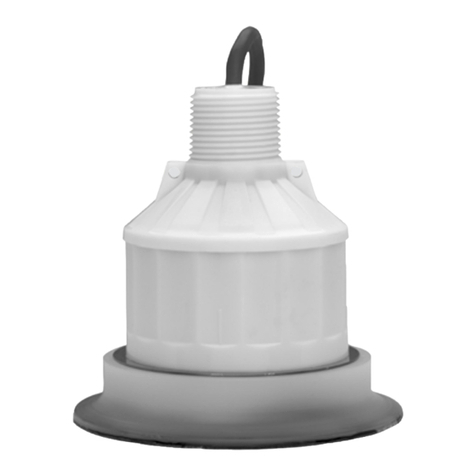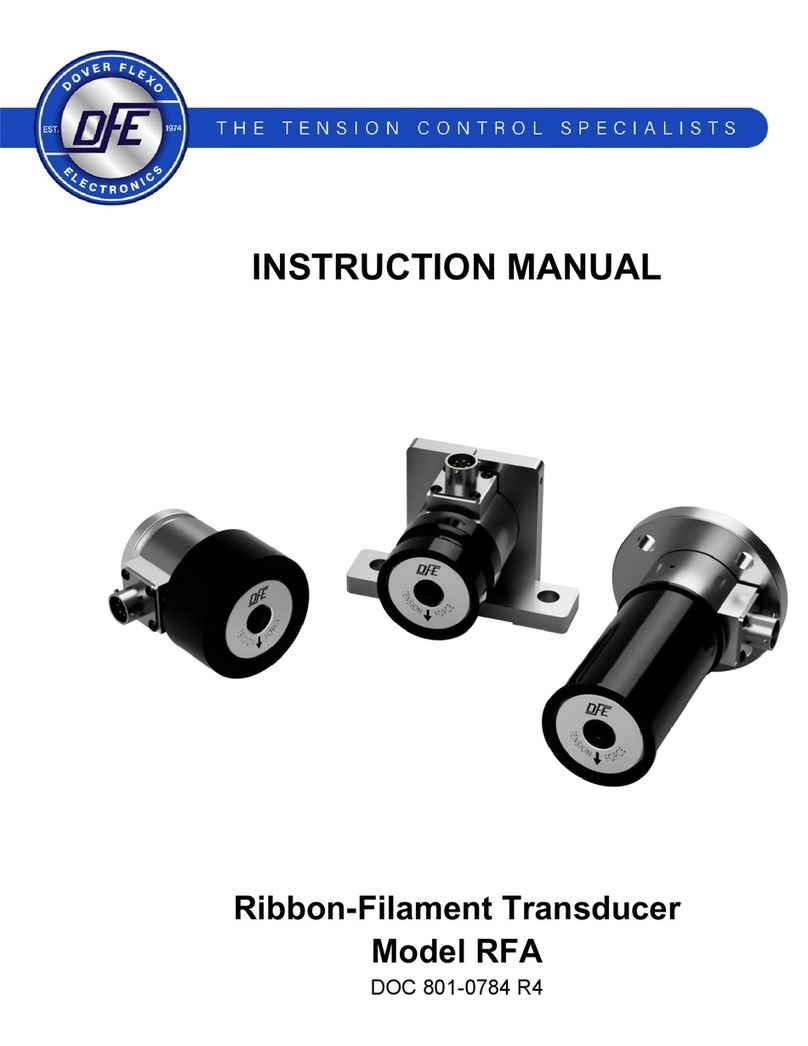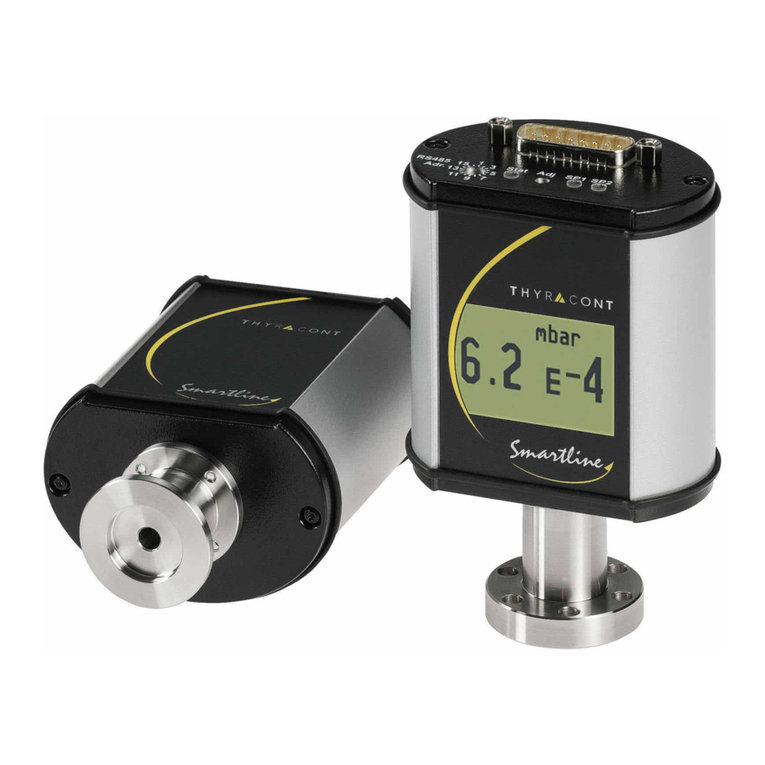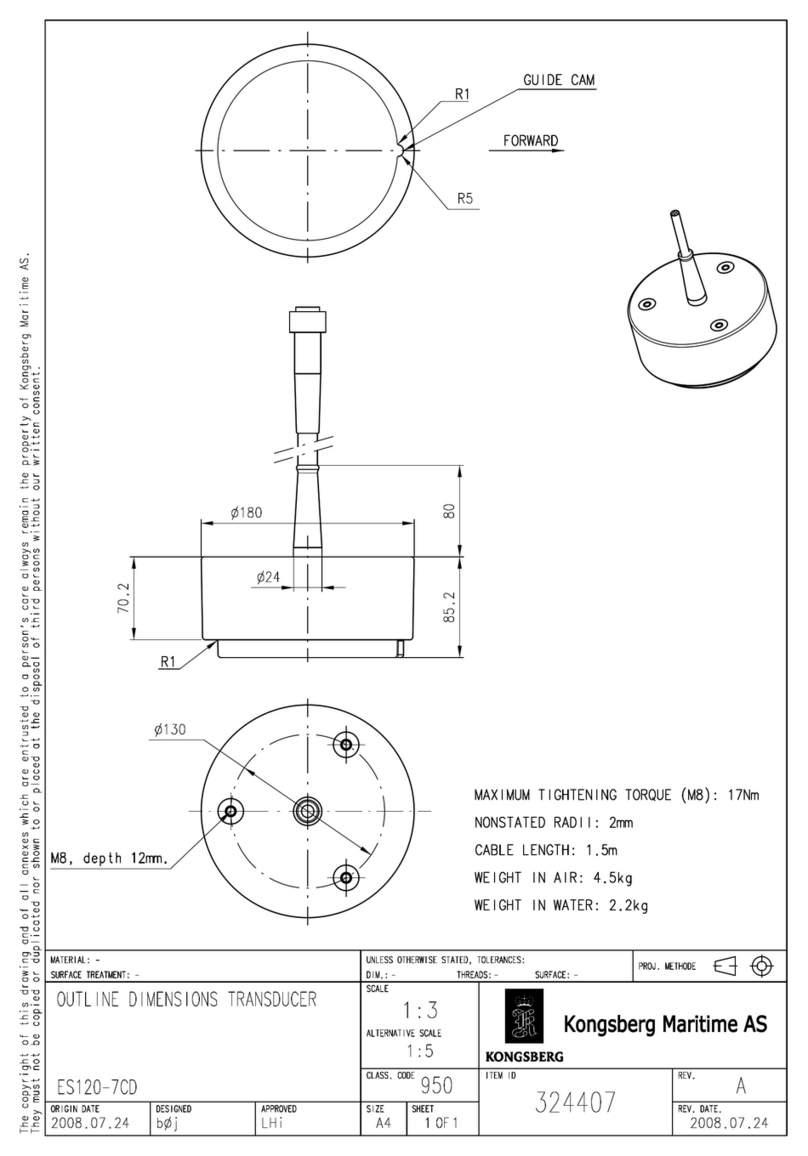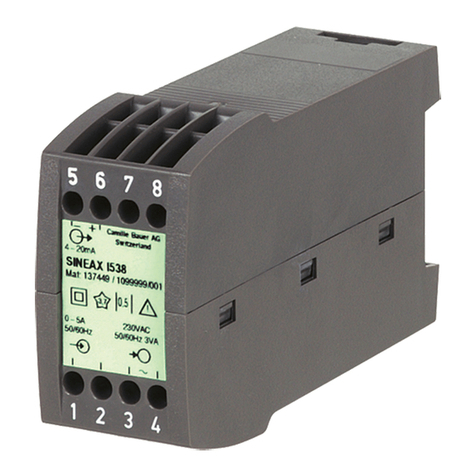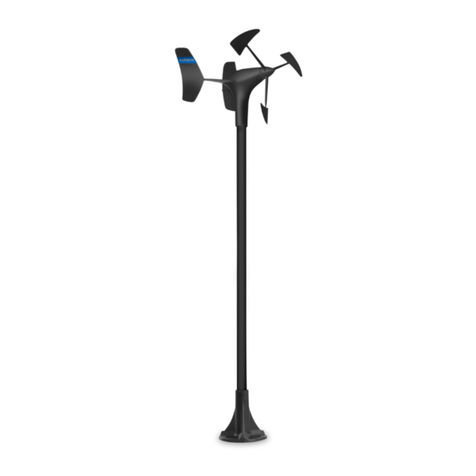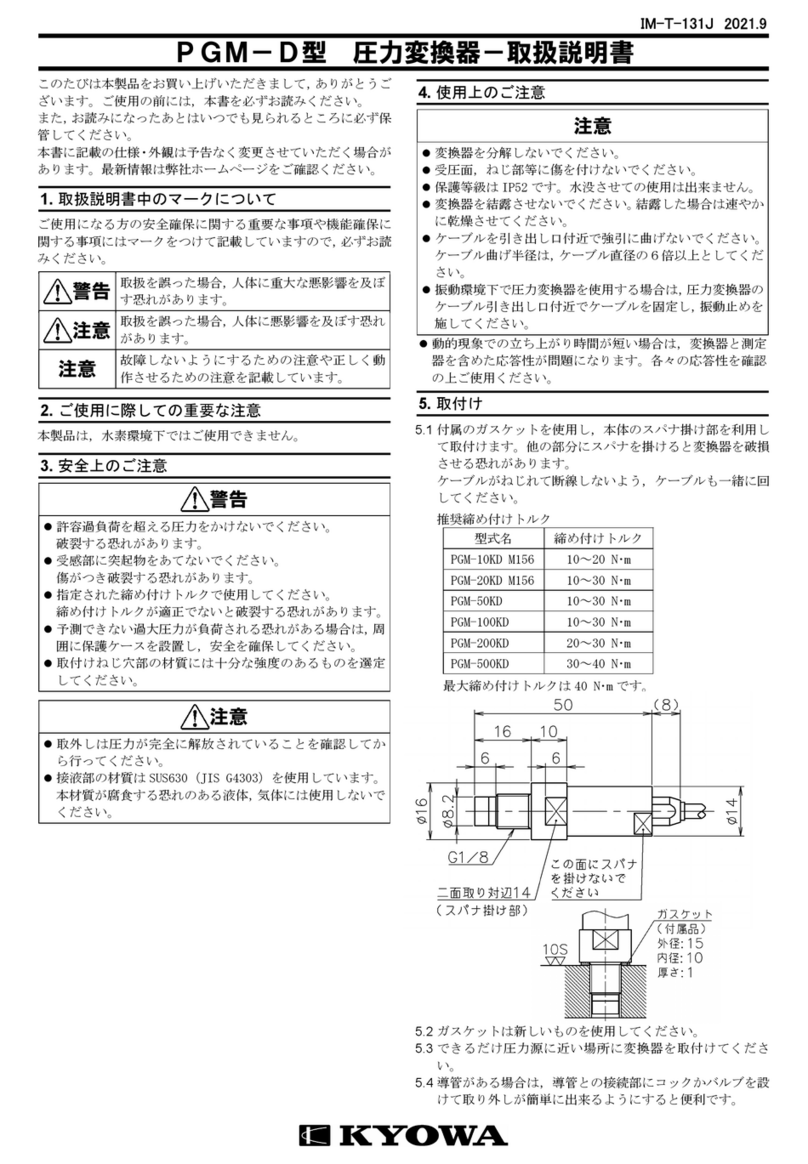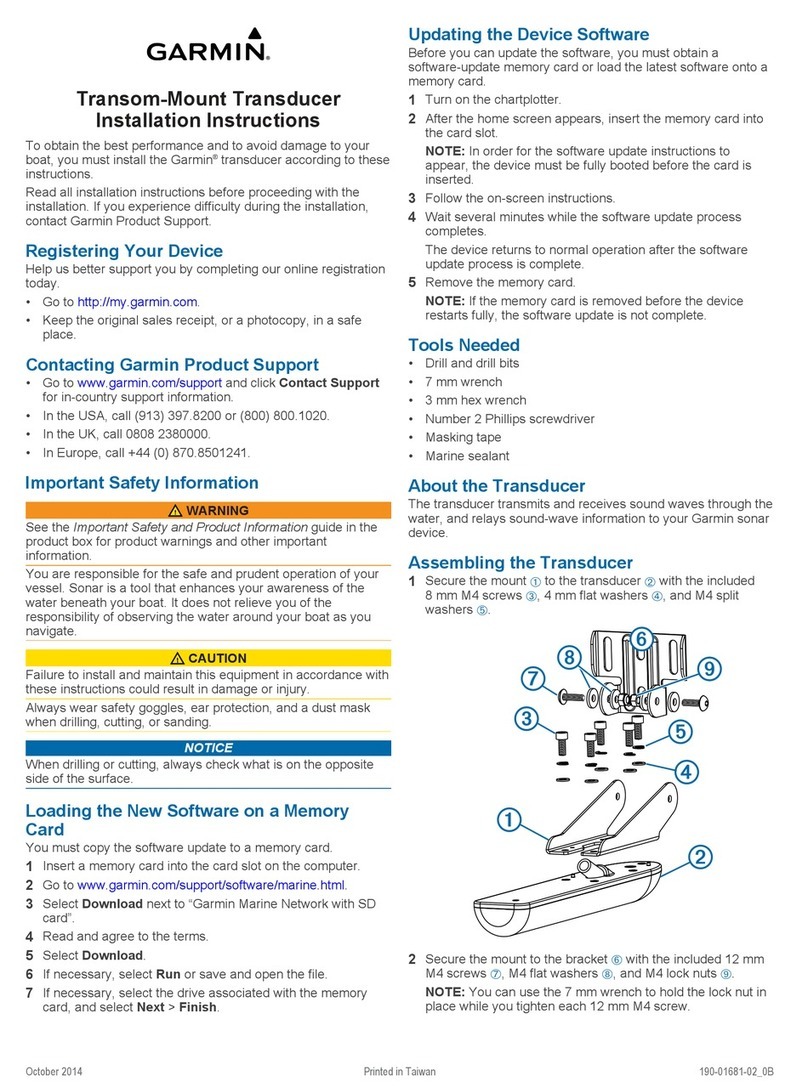SIAP+MICROS t002 TTT Guide

t002 TTT
Ground Temperatue Transducer
User Manual and maintenance

User manual and maintenance
t002-di TTT.docx
26/10/2023 2Vers.: 1.0
Summary
1Introduction ................................................................................................................................................ 3
2Caratteristiche tecniche ............................................................................................................................. 4
2.1 Operation scheme ............................................................................................................................. 5
3Installation and maintenance ..................................................................................................................... 6
3.1 Installation.......................................................................................................................................... 6
3.2 Maintenance ...................................................................................................................................... 6
4Electrical connection .................................................................................................................................. 7
4.1 Connector output ............................................................................................................................... 7
4.2 Connection cable ............................................................................................................................... 7
4.3 Read serial data (RS485 Modbus) .................................................................................................... 7
4.3.1 RS485 Modbus mode .................................................................................................................... 7
5Generic information ................................................................................................................................... 8
5.1 Safety................................................................................................................................................. 8
5.2 Appropriate use of the equipment ..................................................................................................... 9
5.3 Storage .............................................................................................................................................. 9
5.4 Moving ............................................................................................................................................... 9
5.5 Disposal information .......................................................................................................................... 9
6Revision history ....................................................................................................................................... 10

User manual and maintenance
t002-di TTT.docx
26/10/2023 3Vers.: 1.0
1Introduction
TTT is a high-quality temperature sensor that has been manufactured on purpose by Siap+Micros for soil
temperature measurement. It is suitable for agrometeorological applications and generally flexible to be used
in every environmental monitoring. The sensor is extremely accurate and it is composed of a 30 cm long
graduated plastic rod, equipped with a sensing element mounted on the rod edge. By inserting the rod into the
ground, TTT can easily provide the value of soil temperature with respect to a specific variable requested
deepness. The protective body is made of high-quality plastic. The sensing element is based on a Pt100
Platinum thermo-resistance calibrated with a response curve in accordance with Class 1/3 DIN 43760
standard. Furthermore, thermo-resistance is installed into a stainless-steel tube, which protects it from
corrosion and ensures at the same time an excellent sensibility to temperature. The sensor is supplied with
power and signal cable (12m).
Ordering Codes:
Natural output: .........................................................t002-TTT-N
Current output:.........................................................t002a-TTT-I
Tension output: ........................................................t002b-TTT-V
RS485 Modbus output: ............................................t002c-TTT-S

User manual and maintenance
t002-di TTT.docx
26/10/2023 4Vers.: 1.0
2Caratteristiche tecniche
Measurement performance
Transducer
Pt100 1/3 DIN 43760
Measurament range
-30 ÷ 60 °C
Accuracy (natural output)
1/3 DIN 43760
Accuracy (current, tension, serial outputs)
1/3 DIN 43760 ± 0.1
Resolution
0.03
Operating conditions
Temperature
-30 ÷ 60 °C
Humidity
0 ÷ 100 RH%
Outputs
Natural
Pt100 with 4 wires
Current
4 ÷ 20 mA ↔-30 ÷ 60 °C
Tension
0 ÷ 2 V ↔-30 ÷ 60 °C
RS485 MODBUS
Temperature
Power supply and Consumption
Voltage supply
7 ÷ 30 Vdc
Power consumption
Min
Typical
Max
4 ÷ 20 mA
5
25
0 ÷2 V / RS485 MODBUS
1
3
Mechanical specifications
Protective body
ABS plastic and stainless-steel screws
Electrical connections
4 male poles IP67

User manual and maintenance
t002-di TTT.docx
26/10/2023 5Vers.: 1.0
Dimension:
H1 – maximum height: 450 mm (TTT-N)
500 mm (TTT-I/V/S)
H2 – stainless-steel tube height: 300 mm
D1 – fixing diameter: 40 mm
D2 – maximum diameter : 50 mm
Element:
A – sensor shaft with possible electronics
B – rod to be buried
2.1 Operation scheme
TTEP-N Natural output version TTEP-I/V/S 4÷20mA, +0÷2Vdc RS485 output version
The internal sensitive element is a 4-wire Pt100 inserted in a stainless steel body positioned at the head of
the buried pipe. In the natural version the output is brought directly to the output connector. In the other
versions, an electronic interface shows the other different types of output on the connector.

User manual and maintenance
t002-di TTT.docx
26/10/2023 6Vers.: 1.0
3Installation and maintenance
3.1 Installation
The Siap+Micros Soil Temperature sensor is made up of
a stem and a rod to be buried where, at the top, here is
the temperature probe embedded in a stainless steel tip.
The part to be buried, in its standard version, is made of
PVC and has a length of 30 cm, other lengths can be
made on request, in order to meet monitoring needs.
The temperature probe is inserted into the steel tip on the
end of the sensor rod.
The sensor rod must be inserted into a vertical hole,
previously made in the ground to be monitored, in an
area free from obstacles or other materials that distort
the measurement. The depth of the insertion can be
controlled by the metric scale located on the side of the
shaft; once positioned, cover the small excavation made
with the previously loosened earth.
The sensor stem, with a diameter of 40 mm, can be
supported by a support pole with a diameter of 48/50mm,
with the appropriate brackets with U-bolts.
3.2 Maintenance
The device does not require any particular maintenance, except for periodic checks on the correct
functioning and integrity of the exposed parts.
For constant verification of the measurement over time, it is advisable to periodically check the sensor in the
factory by comparing it with standard reference instruments.

User manual and maintenance
t002-di TTT.docx
26/10/2023 7Vers.: 1.0
4Electrical connection
4.1 Connector output
Pin
Naturale output
I / V / S output
1
I+
Vcc
2
V+
+4÷20 mA ; +0÷2 Vdc
B-RS485
3
V-
-4÷20 mA ; -0÷2 Vdc
A-RS485
4
I-
GND
4.2 Connection cable
The connection cable supplied with the sensor is made with circular connectors with housing, 4x24 AWG
shielded cable and ferrules for connection to the data logger terminals. The sock is connected to the black
cable.
Pin
1
2
3
4
Cable
Red
White
Green
Black+Shield
Signal
I+
V+
V-
I-
Vcc
(alim.)
+4÷20 mA
+0÷2 Vdc
B-RS485
-4÷20 mA
-0÷2 Vdc
A-RS485
GND
(alim.)
4.3 Read serial data (RS485 Modbus)
Sensors with RS485 Modbus output send data only upon specific request from the PC, data logger or PLC.
Below are the correct communication parameters of the device performing the interrogation.
4.3.1 RS485 Modbus mode
Serial port settings: 9600 baud, no parity, 8 data bit, 1 bit di stop
Compatible with ModBus RTU protocol, functions supported: “03 – read Holding Registers” e “04 – Read Input
Registers”.
Tipo dati: “2 registers swapped float IEEE 754 in the form CDAB where A is the most significant byte of the
float and D is the less significant byte of the float (swapped float)”.
ID
Registers
Units
Reg. 1-2
Reg. 3-4
Reg. 5-6
Reg. 7-8
Reg. 9-10
Reg. 11-12
Reg. 13-14
6
1
°C
Temperature
-
-
-
-
Diagnostic
Supply Voltage
Calza / Shield

User manual and maintenance
t002-di TTT.docx
26/10/2023 8Vers.: 1.0
5Generic information
The qualitative level of our instruments is the result of a continuous evolution of the product. This may cause
differences between what is reported in the manual and the instrument you have purchased.
Siap+Micros S.p.A. reserves the right to modify without notice technical specifications and dimensions to adapt
them to the needs of the product.
5.1 Safety
Please read these safety instructions carefully before using this product:
•The warranty will be void if the product is used differently from the instructions described in this manual.
•Any sign of tampering will void the warranty
•Use the devices only according to the instructions (environmental management, operation, wiring,
installation, etc.) provided in this manual
•The correct and safe operation of the device can only be guaranteed if the transport, storage, operation
and management of the device are compliant. This also applies to product maintenance.
•The device shall not be exposed to aggressive chemicals or solvents that could damage the plastic
casing and/or corrode the metal parts.
•Maintenance should only be performed by qualified and well trained personnel.
It is appropriate to carry out a careful risk assessment in relation to the context of installation and use of the
device by the installer considering the possible meteorological station in its complexity without being limited to
the sensor.
The instruments must be installed according to the rules of the trade, with equipment that complies with
applicable regulations and using supports correctly sized by qualified technicians and designed for the specific
purpose.
During installation operations, check the suitability of the surrounding environment and compliance with local
safety regulations.
The manufacturer declines all responsibility in case of failure due to negligence of the instructions, tampering,
uses not described in this manual, improper use, use by operators not trained.
Read the instructions and intended use carefully and be sure you understand before installing the device
Before starting the activities, check the integrity of the instrument to be installed, prepare the equipment
necessary for the work and wear the necessary PPE.
Take adequate measures to prevent the access of foreign personnel (untrained and uninformed) during the
installation, maintenance or replacement of the instrument.
Take precautions to avoid falling objects, both during the installation phases and during the operation of the
instrument.
Do not perform any activity in bad weather conditions.

User manual and maintenance
t002-di TTT.docx
26/10/2023 9Vers.: 1.0
During maintenance, particularly if the station is not frequented, visually check for the absence of dangerous
insects and, if not, use suitable insecticides.
Consider the presence of any animals near the station, if so, pay attention to them.
Use only SIAP+MICROS original spare parts.
The instrument is not classified suitable (according to Directive 2014/34/EU) for use in atmospheres with
potential explosion risk pursuant to Directive 99/92/EC.
SIAP+MICROS strives to minimize health and safety risks in all phases of the instrument's life, including
installation, use, maintenance, decommissioning and disposal.
5.2 Appropriate use of the equipment
Use the instrument for its intended purpose, do not use it for any other purpose or cause malfunctions and/or
damage.
5.3 Storage
If you do not plan to use the equipment for an extended period of time (at least one year) disconnect all cables
from the equipment, place it in a clear plastic bag along with a bag of desiccant salts and seal the bag with
tape. Put appropriate indication on the bag of the contents and weight of the equipment by inserting the wording
"HANDLE WITH CARE".
Store the instrument in an environment with a temperature between 0°C and 60°C with a humidity not
exceeding 80%. Make sure that the instrument is stored in a stable position and that it cannot be damaged or
moved by inexperience or carelessness. Do not stack other tools or weights. Do not place the instrument on
top of other instruments and in any case ensure the solidity and stability of the underlying support.
Non esporre, stoccare lo strumento in ambienti con presenza di vapori e/o gas corrosivi.
5.4 Moving
In order to avoid any damage to the device during transportation, please keep it in upright position without
shaking.
5.5 Disposal information
Electrical and electronic equipment marked with specific symbol in compliance with 2012/19/EU
Directive must be disposed of separately from household waste. European users can hand them
over to the dealer or to the manufacturer when purchasing a new electrical and electronic
equipment, or to a WEEE collection point designated by local authorities. Illegal disposal is
punished by law.
Disposing of electrical and electronic equipment separately from normal waste helps to preserve natural
resources and allows materials to be recycled in an environmentally friendly way without risks to human health.

User manual and maintenance
t002-di TTT.docx
26/10/2023 10 Vers.: 1.0
6Revision history
The following table shows the description of the changes made to this document.
Version
Date
Updates
1.0
05/06/2023
Current version of the document.
All the information content in this document are the current available at the printing phase. Siap+Micros S.p.A. reserve the rights to change
the specifications without any advance notice
Table of contents
Other SIAP+MICROS Transducer manuals
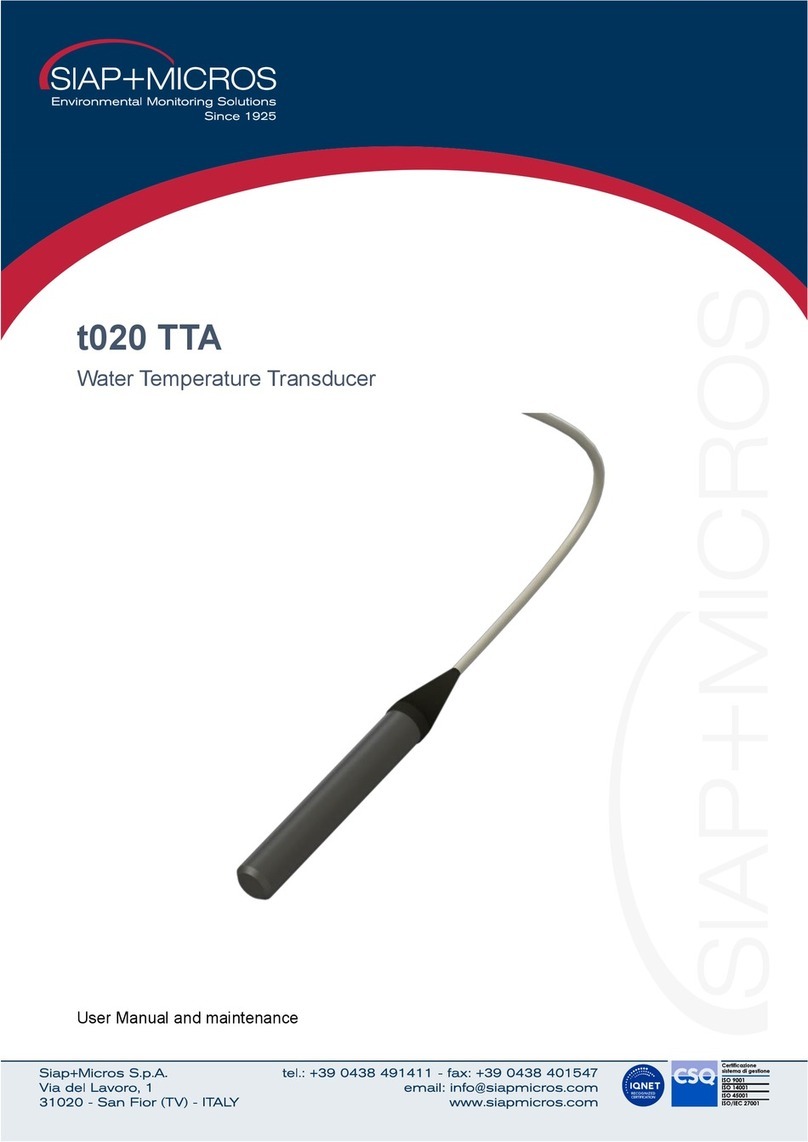
SIAP+MICROS
SIAP+MICROS t020 TTA Guide
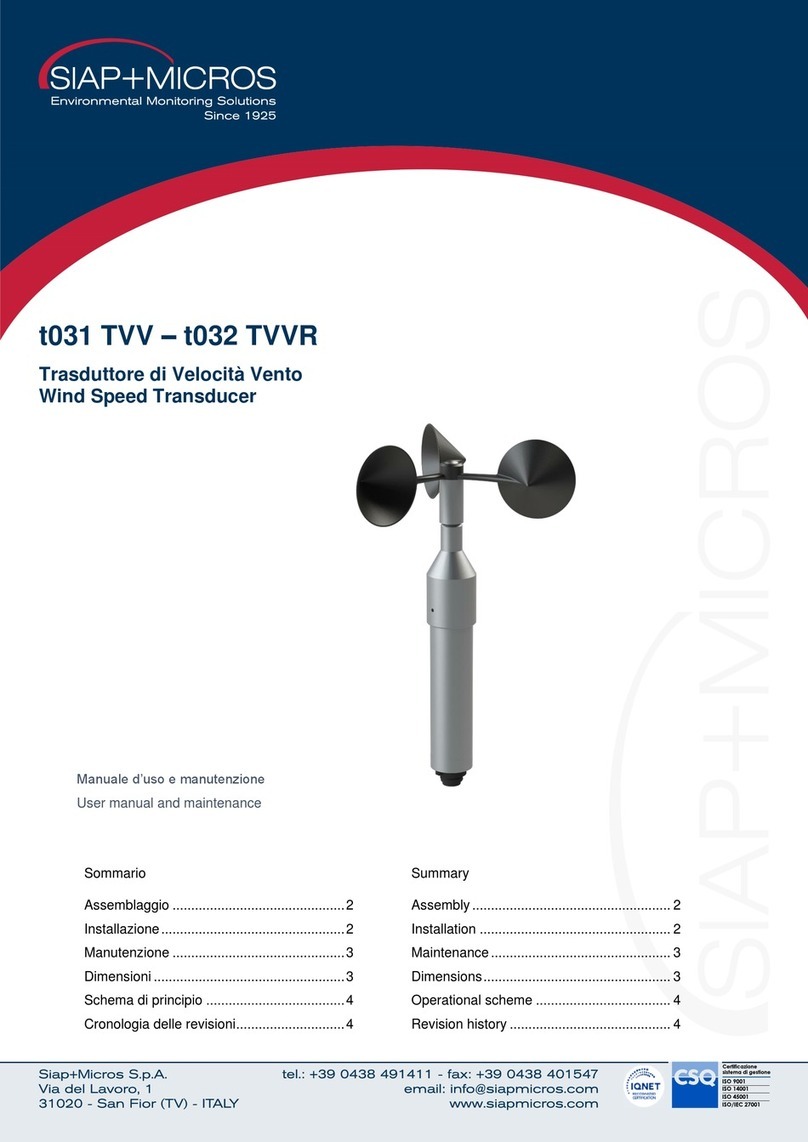
SIAP+MICROS
SIAP+MICROS t031 TVV Guide

SIAP+MICROS
SIAP+MICROS t031 TVV Guide
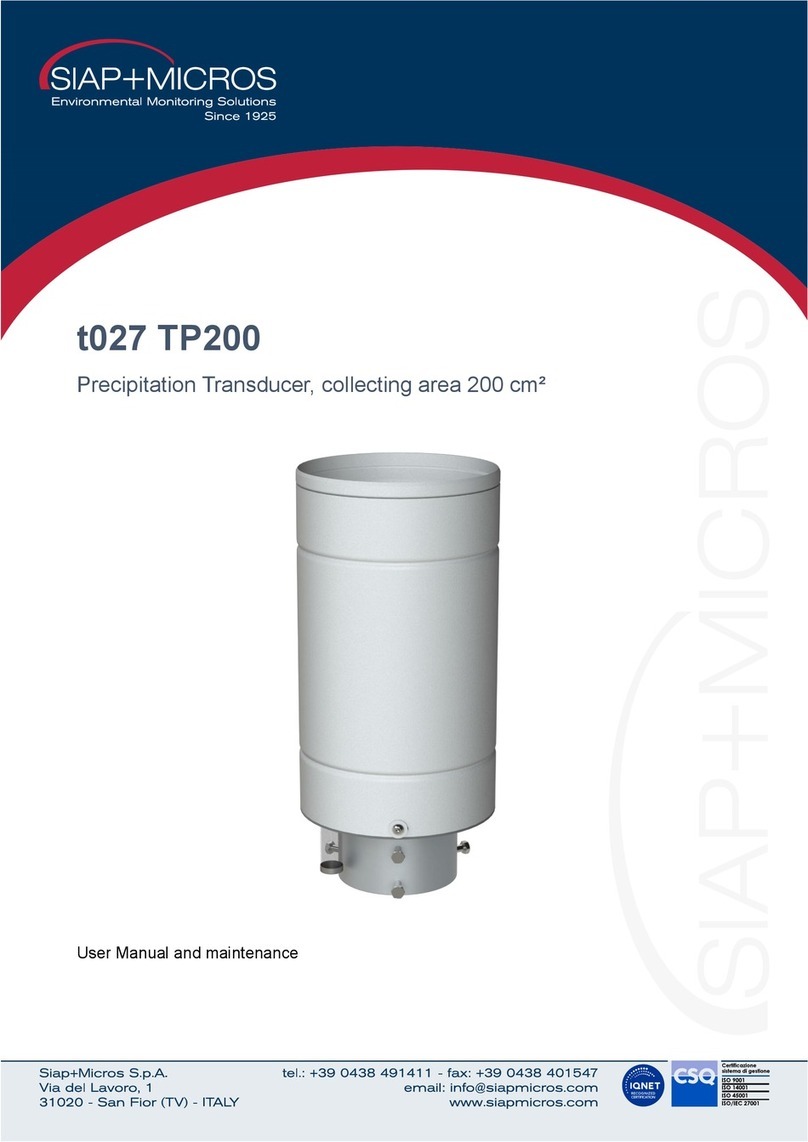
SIAP+MICROS
SIAP+MICROS t027 TP200 Guide
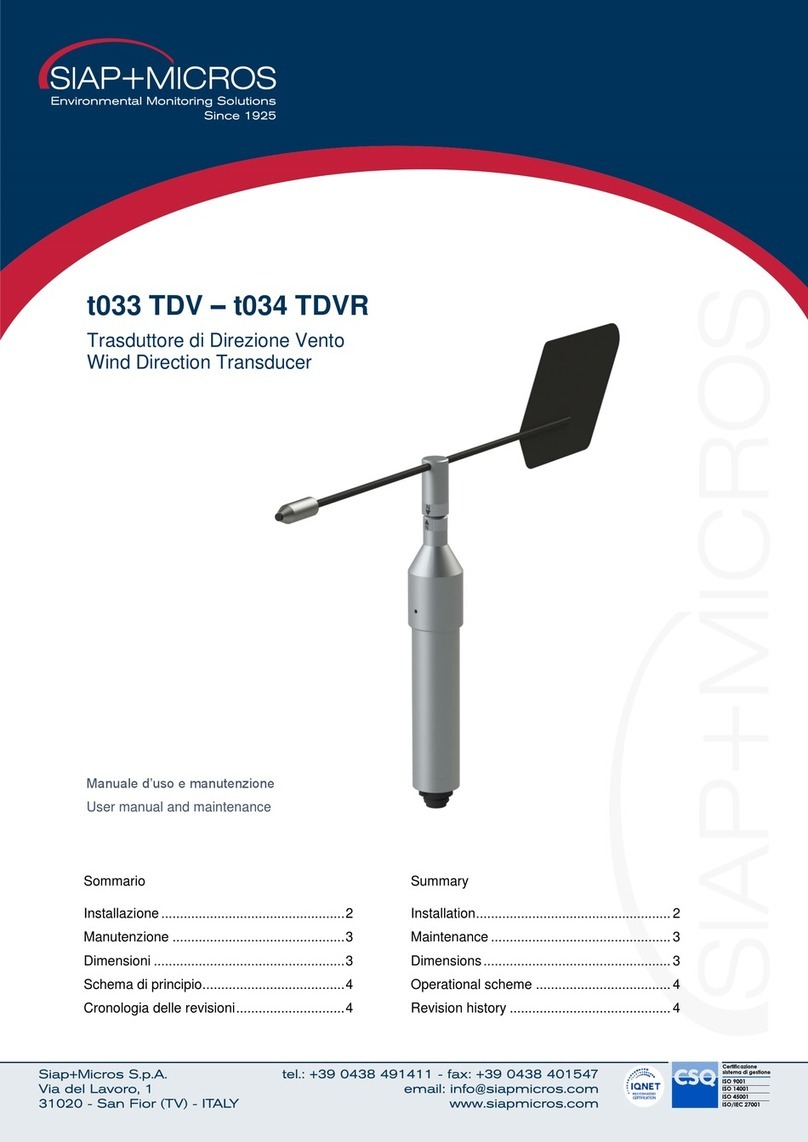
SIAP+MICROS
SIAP+MICROS t033 TDV Guide

SIAP+MICROS
SIAP+MICROS t003 TRH Guide
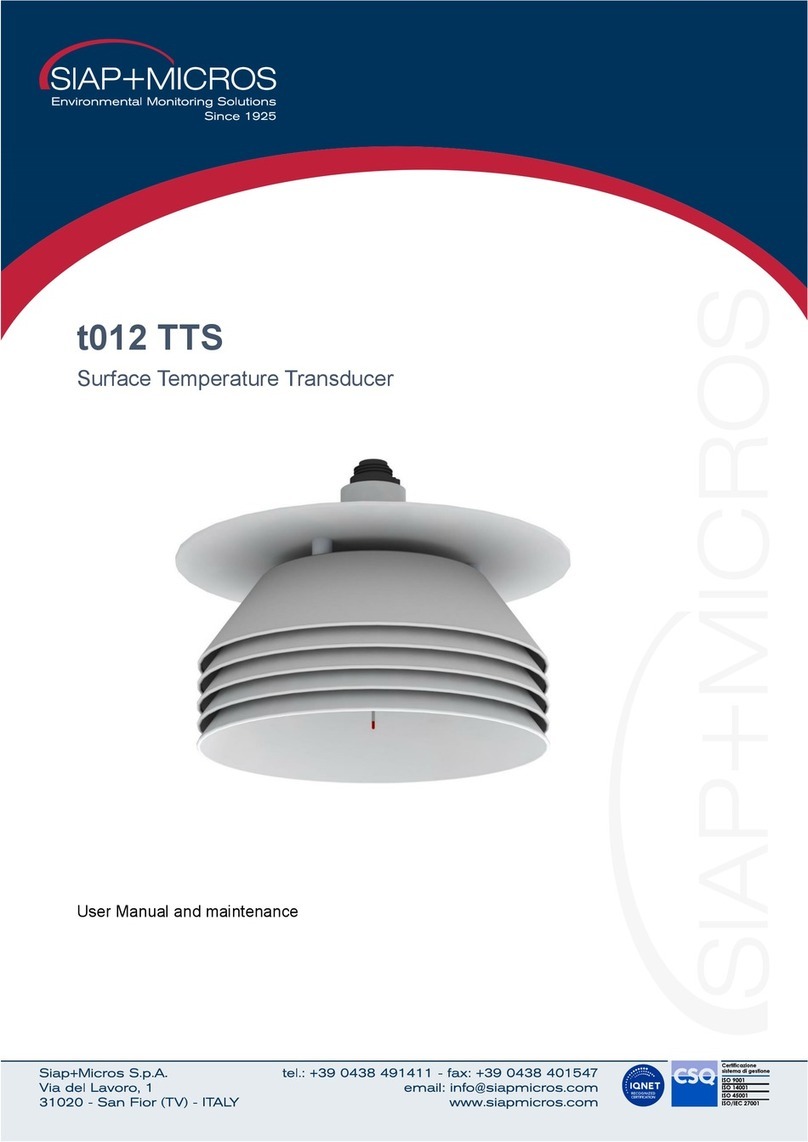
SIAP+MICROS
SIAP+MICROS t012 TTS Guide
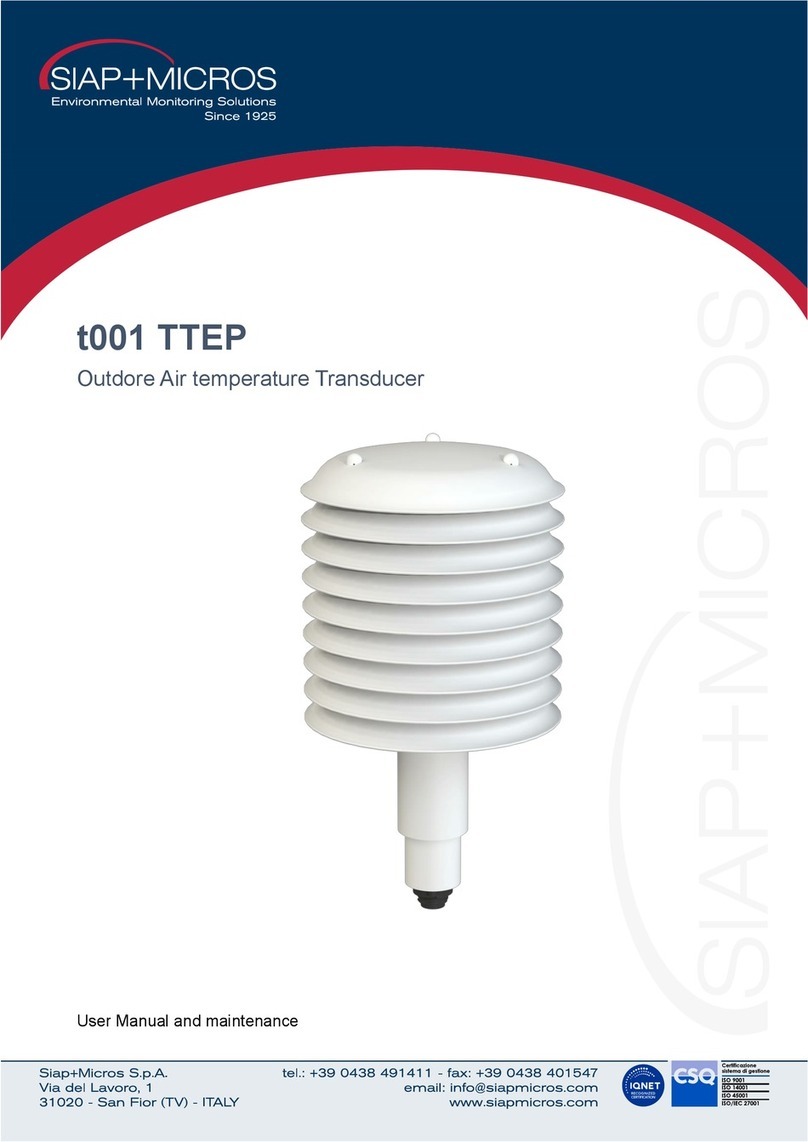
SIAP+MICROS
SIAP+MICROS t001 TTEP Guide
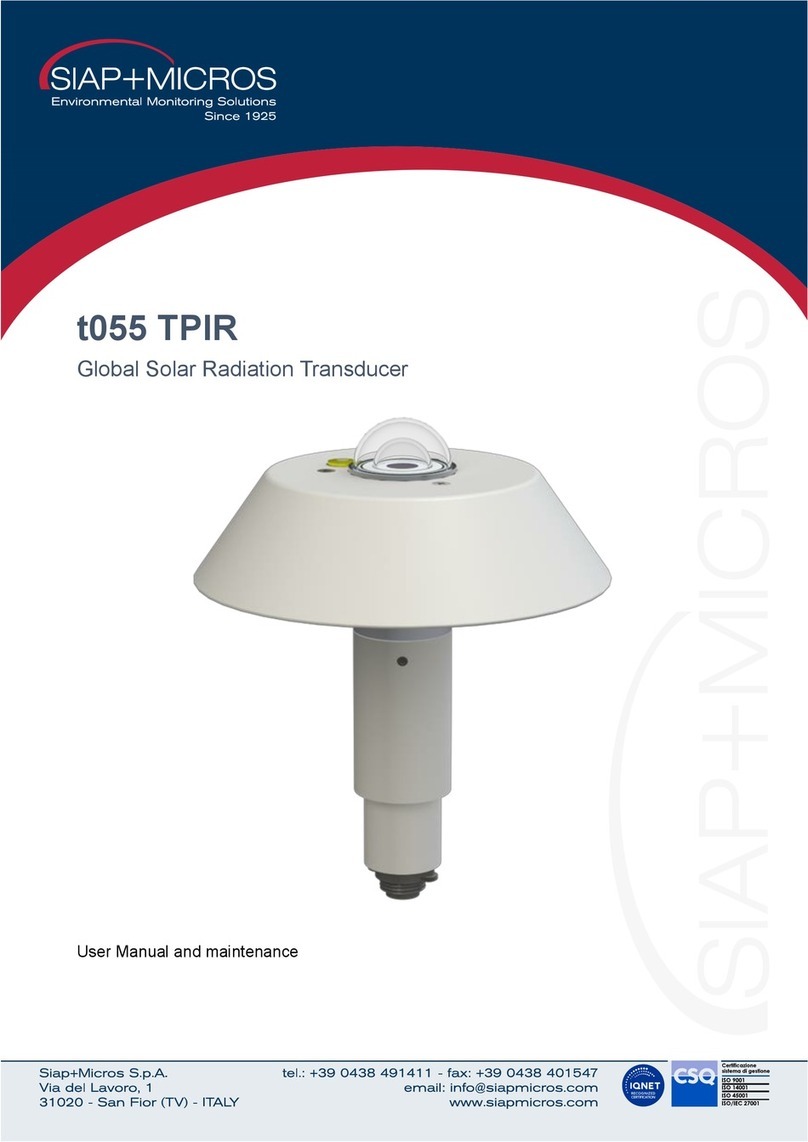
SIAP+MICROS
SIAP+MICROS t055 TPIR Guide
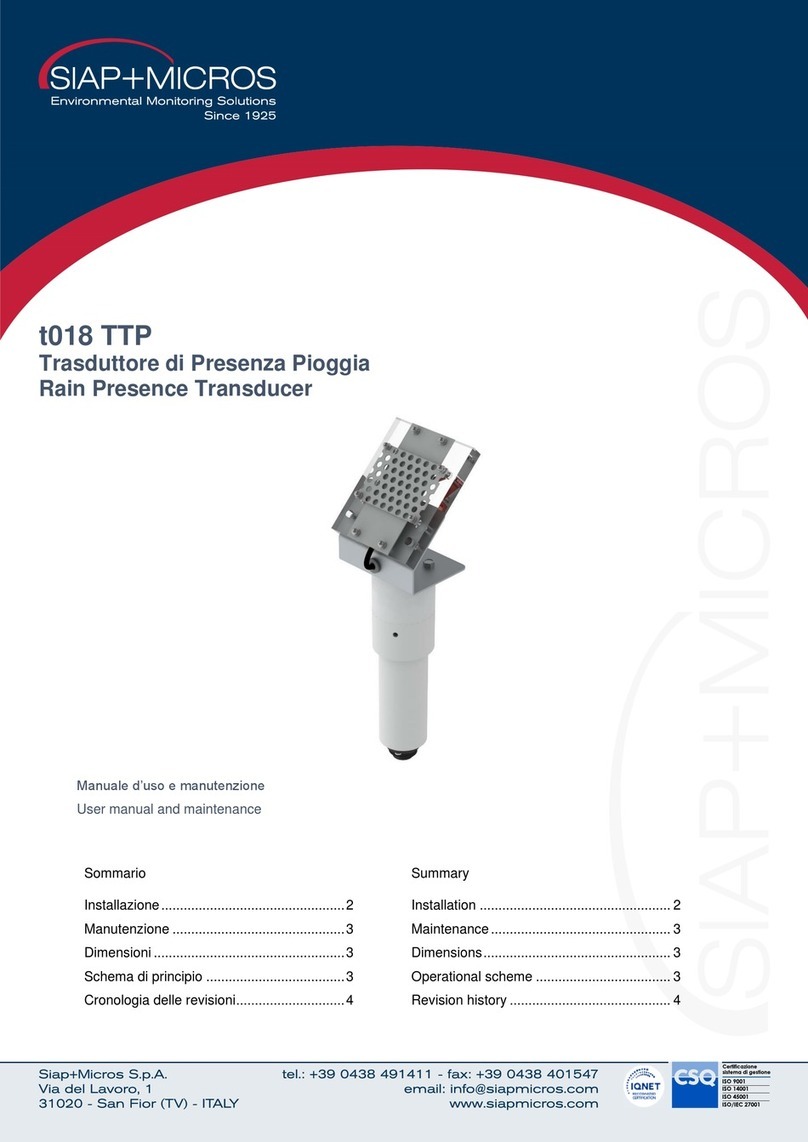
SIAP+MICROS
SIAP+MICROS t018 TTP Guide
Popular Transducer manuals by other brands

GEM
GEM 3220 Installation, operating and maintenance instructions
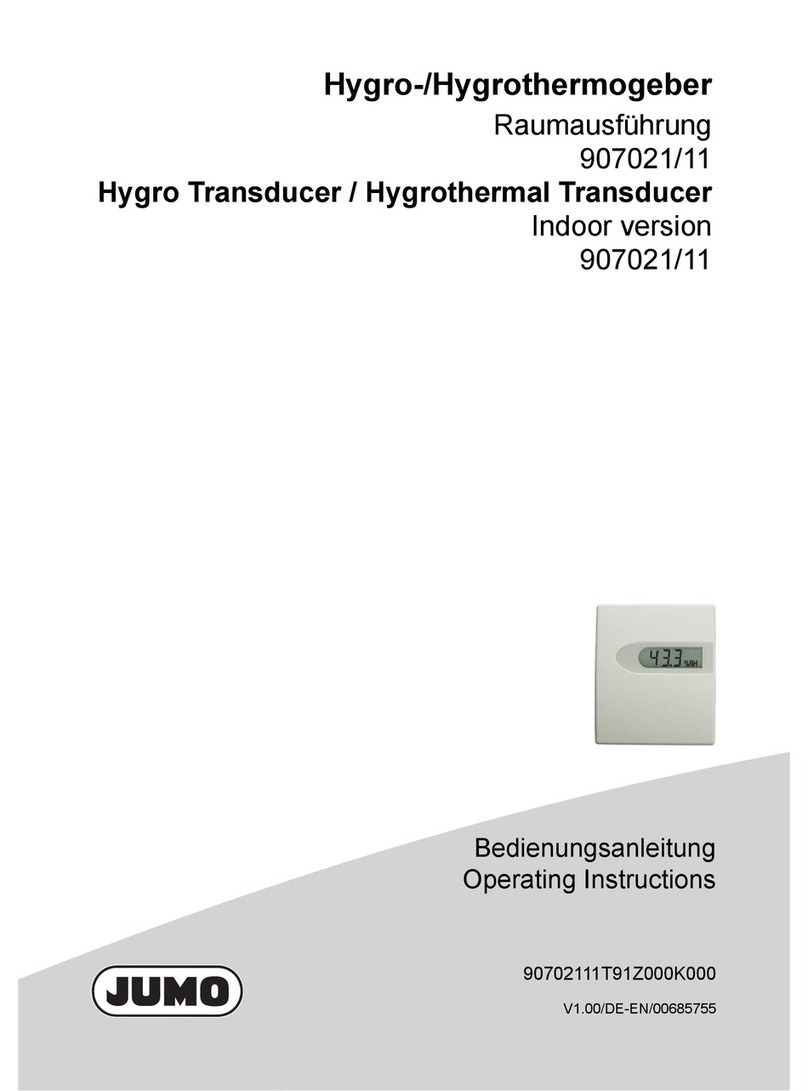
JUMO
JUMO HC103 operating instructions

Furuno
Furuno FI-3001 Operator's manual
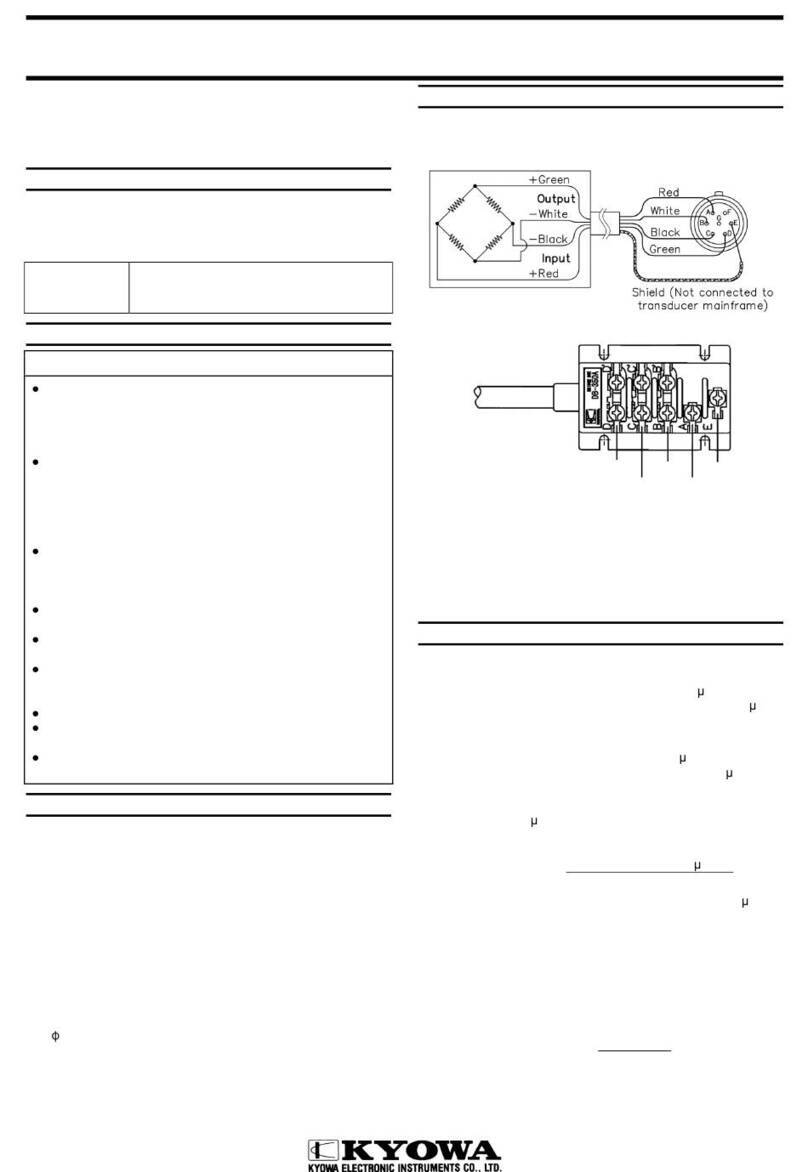
KYOWA
KYOWA BER-A-15S instruction manual

Airmar
Airmar P19-12 Owner's guide & installation instructions
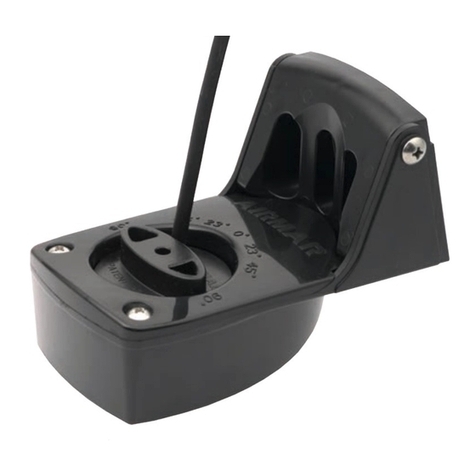
Airmar
Airmar P48W Owner's guide and installation instructions

